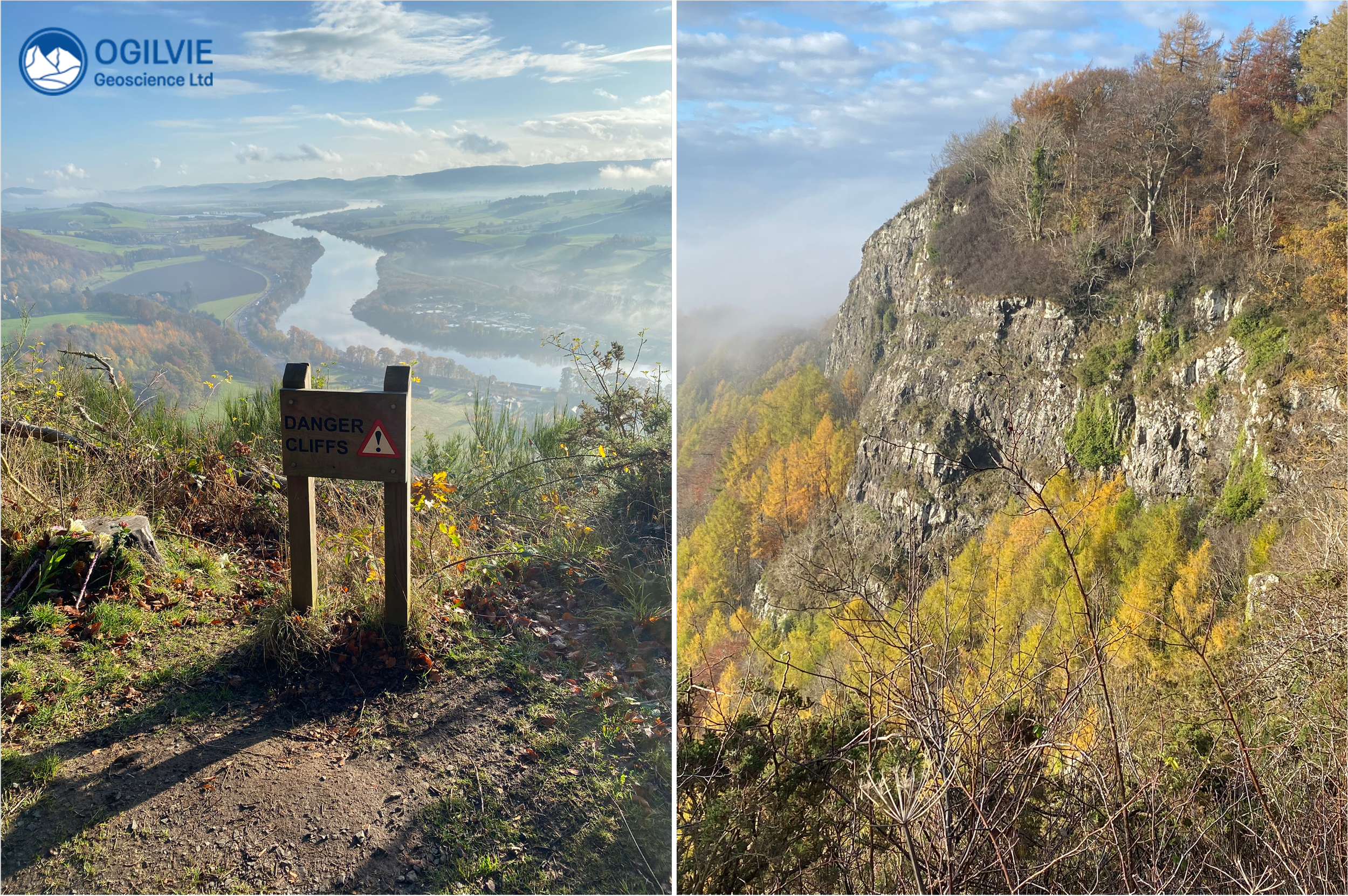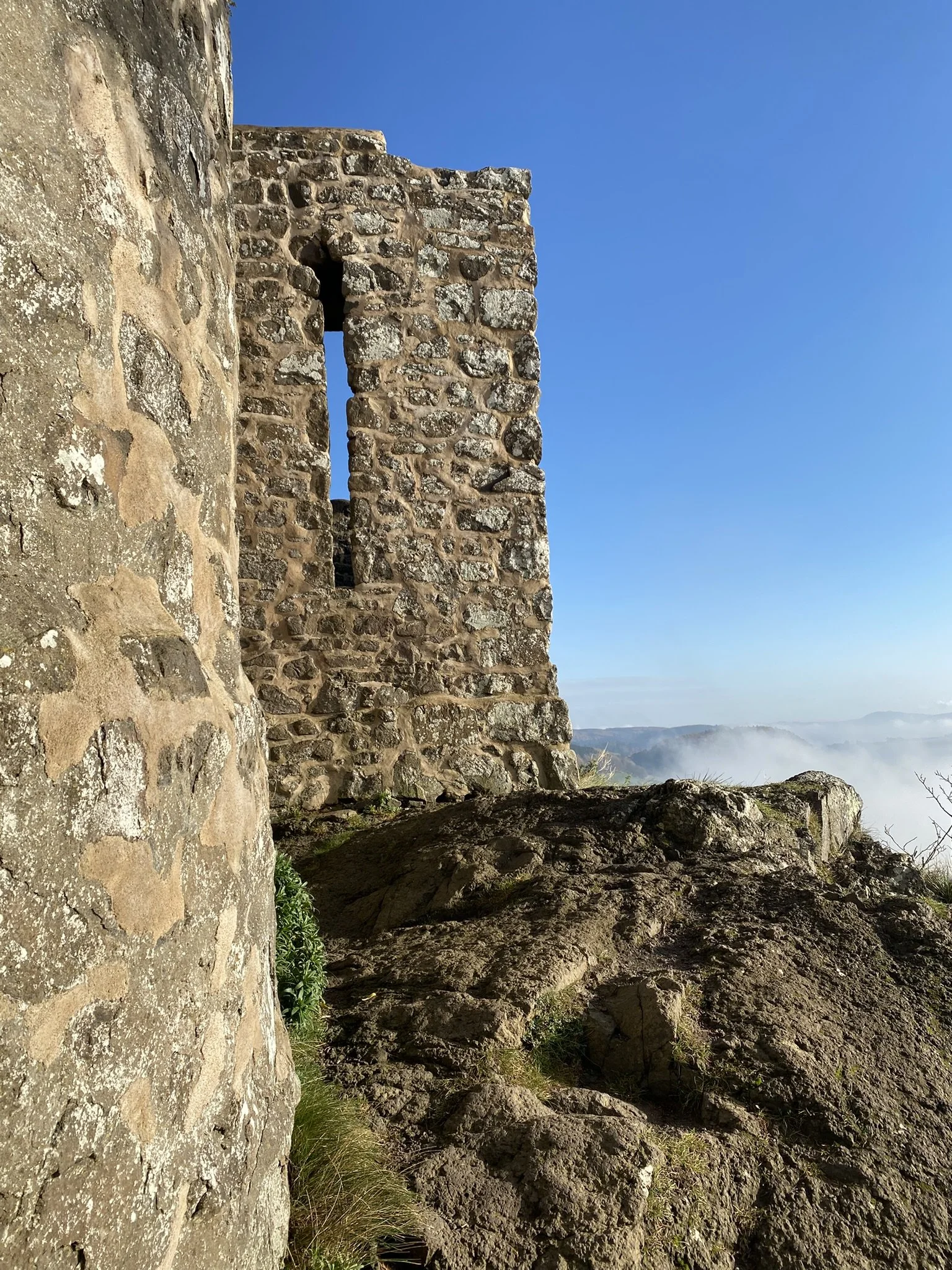Andesite lava, Kinnoull Hill, Perth, UK
Whats so special about Kinnoull Hill ?
Kinnoull Tower on the approach from the 2nd viewpoint
It’s south facing side is one of the most photographed sites in Scotland appearing on many calendars and postcards. This is due to the steep and dramatic, craggy lavas that make up it’s south facing side, topped by the folly of Kinnoull Tower. This is the site of an ancient volcano. I had seen it (what felt like) 100s of times on the right hand side of the drive along the M90 from Dundee to Perth and decided to take a look from the top as was sure the views would be magnificent.
How do I access the Hill paths ?
Park in Corsiehill Quarry just off of Corsiehill Road at the eastern edge of Perth. The quarry is no longer working and is now a car park. The trails up the hill start on the west side of the quarry just up from the information board. There are a number of paths but I just stuck to the widest one and it took me about 20 minutes to get to the first (of 2) viewpoints.
The viewpoints
Theres a bench for sitting and a round plate with a 360 degree tour of the various hills and landmarks. It’s not best placed though as the views are obscured by trees and other vegetation. A minute or so along the path to the next viewpoint and the views over the Tay Valley are spectacular. The Fife hills are on your left and you can probably pick out the Ochill hills over the back of Perth on your right hand side. When I arrived the mist was lifting and I couldn’t see much but it was magical hearing the traffic below on the M90 but not actually seeing the road or the traffic on it.
Path on way up Kinnoull Hill and the 1st (not very good) viewpoint
By the time (a few minutes along the path) I got the the tower, the mist had lifted and you get an excellent look westwards at stacked lava flows with eroded tops on the side of the hill. These belong to the Ochill Volcanic Formation which is of Devonian age. The tops of each flow are brecciated and these have weathered out making the flow boundaries easy to see. As depicted on one of the information boards, this indeed is the site of an ancient volcano.
https://geosites.scottishgeologytrust.org/geosite/3529
Be careful not to go close to the edge as it’s a sheer vertical drop - there are plenty warning signs but no barriers
Warning of a sheer vertical drop with River Tay in background and (on the right) a view (to the west) of stacked lavas on the steep cliff faces, from the tower
The tower and andesite lavas at it’s base
The tower is a folly built in the 18th C by Thomas Hay the 9th Earl of Kinnoull to resemble castles along the River Rhine. It was included in Jane Austin’s story “Lesley Castle”. I found this out on wikipedia…
https://en.wikipedia.org/wiki/Kinnoull_Hill
A the front of the folly there is a small set of lava outcrops which have an eroded, crumbly appearance. Again be very careful not to go too close to the edge.
Kinnoull Tower and outcrop of eroded andesite lavas with crumbly, brecciated appearance at front of the tower.
The way back..
Another view of the andesite lava in front of the tower
You can either do a circular and negotiate the various paths to the car park. Despite using the google map navigator on my phone and initially following the red route, I ended up on Corsiehill Road a short distance from the quarry before returning to the car park in the quarry. If in doubt, go back the same way you came.
Whats next ?
Spend some time looking at the lavas and the dolerite dyke (what’s left of it) in Corsiehill Quarry and/or head to Quarryhill park (road to Scone Palace) to check out the Scone sandstone. This was quarried for building the old Perth bridges and used as a building material. It is possibly also where the Stone of Destiny came from. You can also get some food at the cafe at Quarryhill.
Anyway, thats the subject of another blog.





